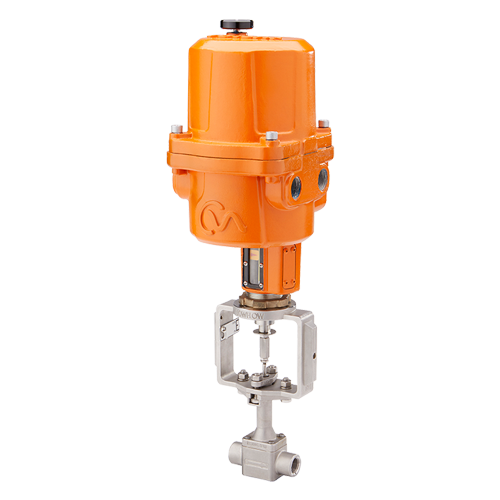Ingenious Control Valves: Enhancing Accuracy and Dependability
Ingenious Control Valves: Enhancing Accuracy and Dependability
Blog Article

Maximize Power Savings and Convenience With Advanced Structure Automation Controls
In the realm of contemporary design and center management, the combination of sophisticated structure automation controls stands as an essential advancement. By taking advantage of the power of automation, structures can adjust, respond, and progress in means that were once unthinkable.
Power Efficiency Perks
Energy efficiency advantages can significantly minimize energy usage and functional prices in buildings. By implementing energy-efficient techniques and innovations, structure proprietors and drivers can attain significant savings while also adding to environmental sustainability. One of the primary advantages of enhancing power effectiveness in structures is the decrease of energy expenses. Energy-efficient systems, such as innovative structure automation controls, can maximize using sources like lighting, air conditioning, and heating, leading to lower power expenses in time.
Moreover, enhanced energy performance can prolong the life expectancy of structure equipment and systems. By running much more efficiently, heating and cooling systems, lighting fixtures, and various other building parts experience much less wear and tear, causing minimized maintenance and substitute expenses. Furthermore, energy-efficient buildings frequently regulate greater residential or commercial property worths and rental prices, supplying long-lasting financial advantages to owners.
Additionally, power performance can boost owner convenience and efficiency. Properly regulated interior settings with optimum illumination and thermal problems produce a more favorable and positive workspace, resulting in boosted employee complete satisfaction and performance. Overall, the energy effectiveness benefits related to innovative building automation controls are complex, incorporating price financial savings, environmental stewardship, and resident health.
Enhanced Comfort Control
Enhancing convenience control in building environments needs a sophisticated combination of advanced automation systems for optimal resident wellness. By utilizing sophisticated structure automation controls, facilities can customize the interior atmosphere to satisfy the specific needs and choices of occupants. These systems make it possible for accurate law of ventilation, temperature, and lights, developing a effective and comfy ambience. Owner complete satisfaction and efficiency are carefully linked to thermal comfort, making it necessary to have systems in position that can adjust to transforming conditions in real-time.
By including these sophisticated controls, buildings can not just improve comfort however also boost energy efficiency by maximizing system procedures based on real tenancy and usage patterns. Inevitably, prioritizing owner convenience through innovative automation systems leads to an extra pleasurable and much healthier indoor atmosphere.
Operational Efficiency Improvements

Additionally, the application of real-time monitoring and analytics devices allows building drivers to identify power ineffectiveness and functional anomalies without delay. By continually monitoring energy use patterns and system efficiency metrics, modifications can be made in real-time to maximize power consumption and guarantee peak functional effectiveness. control valves. Additionally, integrating need response techniques into structure automation controls can better boost operational efficiency by dynamically adjusting energy usage based on grid problems and prices signals
Indoor Environment Optimization
Reliable interior environment optimization is a fundamental aspect of building automation controls, making certain occupants' convenience and well-being while making best use of power savings. By utilizing advanced sensors and controls, building automation systems useful site can continuously change and check temperature level, moisture degrees, air high quality, and ventilation to create an ideal indoor environment. Maintaining comfy and constant conditions not only boosts owner satisfaction but also enhances performance and general wellness.
Indoor environment optimization additionally plays a critical duty in energy efficiency. By fine-tuning air flow, air conditioning, and heating systems based on real-time information and tenancy patterns, building automation controls can significantly lower energy usage - control valves. For instance, applying methods such as demand-controlled ventilation and thermal zoning can help decrease energy waste while ensuring that each location of the building obtains the required conditioning.

Sustainable Environment Creation
Structure automation regulates not just enhance indoor environment problems for power effectiveness and resident comfort but additionally lay the structure for producing a sustainable atmosphere through strategic management of sources and systems. By incorporating advanced building automation technologies, such as sensing units, actuators, and smart software application, facilities can readjust and keep an eye on energy usage in real-time to decrease waste and minimize their carbon footprint. These systems enable anticipating maintenance, recognizing possible problems before they intensify and enhancing devices performance to enhance durability and effectiveness.
Additionally, sustainable setting creation expands past power monitoring to encompass water preservation, waste reduction, and indoor air top quality enhancement. Building automation controls can regulate water usage, discover leaks, and make sure proper garbage disposal methods, adding to general sustainability initiatives. Furthermore, by monitoring and managing air flow and filtration systems, these modern technologies enhance passenger health and efficiency while lowering power consumption connected with HVAC operations.
Verdict
To conclude, advanced structure automation controls offer substantial advantages in regards to energy savings, comfort control, functional performance, interior climate optimization, and producing a sustainable setting. By implementing these controls, buildings can accomplish optimum efficiency while reducing energy consumption and enhancing passenger convenience. It appears that making use of advanced automation technology is vital in boosting structure efficiency and developing an extra lasting future.
Power performance advantages can significantly reduce energy consumption and operational expenses in buildings. In general, the energy performance advantages associated with advanced building automation controls are complex, incorporating price financial savings, ecological stewardship, and passenger wellness.
Furthermore, incorporating need feedback methods into building automation controls can better improve functional performance by dynamically adjusting power use based on grid conditions and pricing signals.
Structure automation manages not just maximize interior climate problems for energy efficiency and owner comfort but likewise lay the you can try these out foundation for developing a sustainable environment with tactical management of systems and resources.In verdict, advanced structure automation see page manages deal considerable benefits in terms of power savings, convenience control, operational performance, indoor environment optimization, and producing a sustainable setting.
Report this page